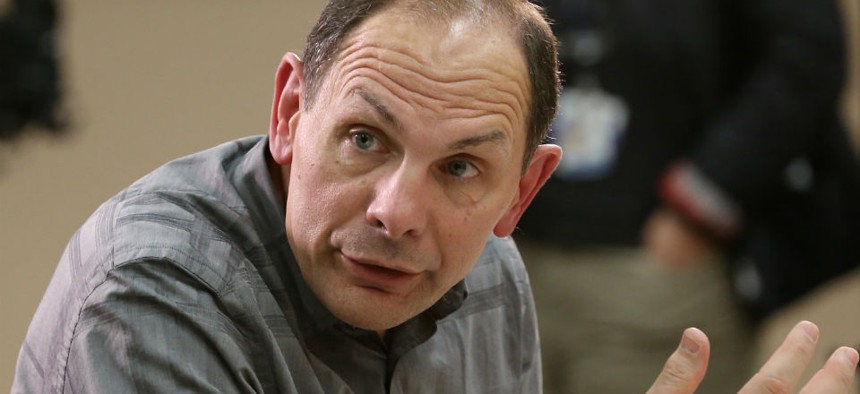
Secretary Bob McDonald has been out recruiting future doctors from medical schools. Veterans Affairs Department
Wanted: More Docs and Nurses at VA
The department’s largest staffing shortages are in jobs it needs the most, according to watchdog.
The Veterans Affairs Department has the most difficulty recruiting and retaining doctors, nurses and psychologists compared to other jobs within the VA, according to a new inspector general report.
VA’s “largest staffing shortages” were in five occupations: medical officer, nurse, physician assistant, physician therapist and psychologist, the watchdog’s analysis found. The job of medical technologist is another occupation the department has had difficulty filling and keeping people in, according to the report.
The IG defined staffing shortages broadly – not just in terms of filling vacancies or replacing employees.
“Beyond the number of vacancies, considerations might include, but are not limited to, occupations with past and anticipated growth in demand; occupations for which the available labor force is highly competitive; occupations with historically high attrition rates; incorporation of existing or anticipated programmatic growth; geographic and demographic variability; productivity and allocation of staff duties between direct-care, administrative, and research responsibilities; occupations that overlap in their contributions to patient care; and variance from data-driven occupational staffing standards,” the analysis stated.
The report, which Congress required as part of the 2014 Veterans Access, Choice, and Accountability Act, basically validates what the department already knew and has been working on improving -- in particular, hiring and retaining more physicians, nurses and mental health professionals to care for an increasing number of Iraq and Afghanistan war veterans. The law requires VA to report annually on the five occupations with the largest staffing shortages based on the preceding five-years. The inaugural report was released late last week; subsequent reports will be due annually by Sept. 30, the end of the fiscal year.
“We examined and analyzed VHA [Veterans Health Administration] data from the prior five years, placing greater emphasis on the more recent data, as this was felt to better reflect present and future VHA staffing needs compared to data from the earlier years in the timeframe,” the watchdog said. The IG asked each VHA facility to provide a list of up to 10 jobs that were the most difficult to recruit for and retain employees.
The department has been hiring new doctors, nurses and clinicians over the past few years as part of a major initiative that will ultimately fill roughly 28,000 jobs. In September, the VA announced it planned to increase the annual salaries of new physicians and dentists by up to $35,000 as part of a nationwide recruitment effort to hire more doctors and improve veterans’ access to care.
Secretary Bob McDonald has expressed concern about the department’s ability to recruit and retain a talented workforce as it recovers from a major scandal and reinvents itself to better serve the country’s vets. Since he took over this summer at the VA, McDonald has spent a considerable amount of his time personally recruiting future doctors from medical schools across the country.
The IG recommended that the VA’s undersecretary for health continue to develop and implement staffing plans for jobs the department critically needs, which the department agreed with.
“Much work has already been accomplished in the arena of developing clinical staffing models,” said Dr. Carolyn M. Clancy, VA interim undersecretary for health, in response to the report. “VHA implemented the Patient Aligned Care Team (PACT) model in 2009, which now forms the national standard for primary care delivery across VHA. PACT is supported by national policy; establishes panel sizes specific to each team; enables specific integrated health care for each patient; and incorporates relevant specialty services and support services to meet patient-centered needs.”
President Obama’s fiscal 2016 budget proposes adding 11,600 more full-time employees at VA.







